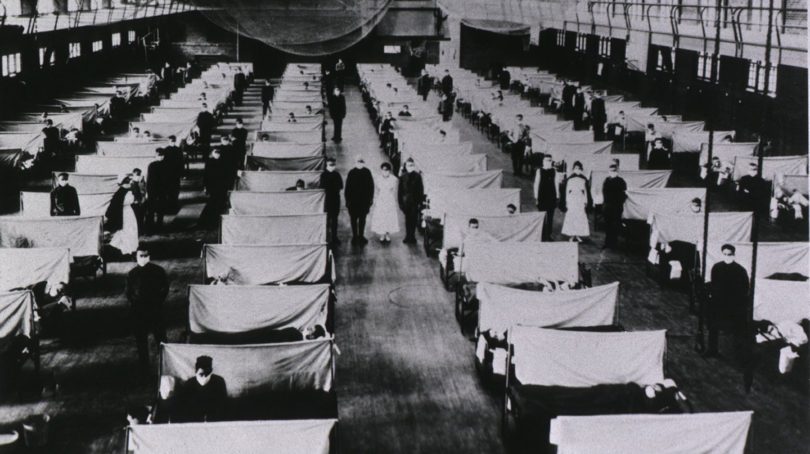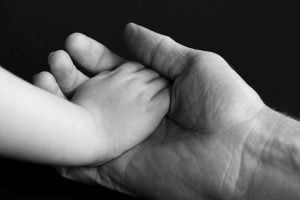Robert Angotti, Lic. Ac., Herbalist
“We learn from history, that we don’t learn from history.”
~Georg Hegel, German Philosopher
I was listening to an interview with historian John Barry, author of The Great Influenza: The story of the deadliest pandemic in history. To start this discussion, I would like to begin with some history about the Spanish Flu as presented by Mr. Barry. I think it will help frame my discussion for the second stage of treatment against COVID-19.
On Labor Day of 1918 the United States was still the midst World War I. In an effort to fortify the national identity, the US government cracked down on any “anti-patriotic” language. Citizens could get 20 years in jail for speaking or writing any “disloyal, scurrilous, or profane language about the government of the United States.” In addition to the fear of threats to the morale of the military campaign, the government was in need of money for the war. Meanwhile, the Spanish Flu (an H1N1 virus) had taken root in the country. The virus started in the fall of 1917. After a tragic spring in 1918, there were already somewhere between 50,000 and 75,000 US deaths. During the summer months however the pandemic quieted down. Gradually, the economic and political demands for maintaining the war were increasing.
The politicians in Philadelphia decided to hold a “Liberty Parade” in order to raise money for the war. Medical experts were adamantly against it and made it known. Meanwhile, the editors of local press syndicates were silencing any stories that might discourage the parade. The influence of the “disloyalty” laws mentioned above were clearly on their mind.
In the end, the parade went forward and all the ingredients for an exponential spread were in place. Within three weeks 4,500 citizens of Philadelphia were dead from the flu. By the time the pandemic finally receded, over 14,500 people had died in the city of Philadelphia. The second wave of the Spanish flu was the much worst than the first. The death toll in the United States when this flu finally wained was somewhere between 500,000 and 700,000. An estimated 5 million people had perished in the pandemic globally.

Reflections on Today
I tell this story because it reflects a time during a pandemic when our country had thought it had clearly entered phase two of treatment. Phase one was tragic and terrifying for the population back in 1917, but the fear of the risks to the war effort started to outweigh the fear of the pandemic. Moreover, the population was surely weary from the demands that isolation, social distancing, economic hardship and the war were placing on them. For many, it appeared as if the virus was contained, for many it appeared as if the “patient” was healed.
As I discussed in the previous article, stage one treatment is about determining if the therapy is helping. Stage two treatment is about determining how much the treatment plan can help. In stage two of treatment, a physician is asking “can the treatment be curative or does it remain palliative?” In other words, is treatment only dealing with the symptoms? Is the root cause lying beneath the surface ready to spread when circumstances allow?
In stage two of treatment, both patient and physician need to be certain that the acuteness of the condition has receded. A physician can begin addressing the problem at its roots, but they must always stay vigilant to the likelihood of a flare up. In the case of COVID-19 we still don’t have evidence that the spread has receded. We are starting to flatten the curve but the treatment has only slowed the infection rate from its continued climb.
Stage two of treatment is always the most challenging for patients to accept. It’s also always the most challenging for me as a physician. Often, during the second stage of treatment I find I have to encourage patients to really embrace modifying lifestyle patterns. These are frequently recommendations most people don’t want to hear. In the previous article, I used the metaphor of destructive foods like sugar, but the list of problematic behaviors that need to be addressed in stage two can be quite long. For some patients this could be working too much, exercising too little, eating inappropriately, drinking too often. For others it may be tied to the love of activity that consistently aggravates their condition. Or, maybe there is a relationship pattern patients are unable to change, leave or accept. We all run into something that would be better for us, or help us get at the root of our discomfort, but we don’t enjoy taking that medicine. This is manifesting in our society now in the fight against COVID-19 with the surfacing of reasons why continued treatment is problematic.
Sustained focus
In wholistic medicine, stage two treatment is when the deeper restorative therapy needs to be initiated. This can mean several months of treatment, herbal therapy and lifestyle adjustments. Consistent intervals of treatment are still important. However, for patients the impact of treatment is less obvious. But, without a steady treatment course, a patient is likely to lose ground on the benefits they’ve seen. We some improvement, patients often lose their attention and dedication to the long term goals of therapy. Additionally, the cost of therapy in time and money may speak louder than the symptoms. Nonetheless, all the indicators for a relapse are still there. Again, when we extend the patient metaphor to our society as a whole, in the face of the pandemic we must acknowledge that the ingredients for a second wave are in place. We must stay the course on treatment.
I get it. I understand there is an economic argument. I understand that there is a cost to the treatment. I’m not making money rambling on here! I understand that when the effects of the disease are no longer compromising your life directly, you would want to get back to normal. But normal must be different, or normal could be like the second wave of the Spanish flu. Imagine what the economy will look like during, and after that.
I see this struggle play it out in most patients I treat. All I can do when this happens is be honest with them about what I see. I focus on motivating a commitment to the treatment plan by explaining some of the correlations and patterns. In the end however, it’s up to the patient to put that plan into action.
“How Much Better Can This Get” Stage two treatment with COVID-19

Here is what I ask as a physician. Stay home generally and wear a mask in public. Wash hands regularly and encourage others to do the same. Embrace self care as your means of prevention. Get regular and well dosed exercise, adequate rest, more vegetables etc. These are the basics principles of health and I will write more about them over time here.
Nurture family and other relationships. Enhance your communication skills in order to both express your needs and hear others. Pay attention to medical experts, but dose your news properly. If you find you need to share everything you are hearing on the news, it’s probably a good time to limit the dose. I need to take my own medicine on that advice.
If you want to watch or listen to the news put more weight on third party research than on celebrity opinions. Many people in the news have become wealthy by saying sensational things that aren’t news, but elicit an emotional attraction to that opinion. Study the evidence and the science. Many of the wealthiest and most powerful also control the reigns of the economy and the media. Much like the Spanish Flu there is a dangerous cocktail at the heart of this pandemic. In addition to a deadly virus that cocktail includes an imbalance in power, a demand for loyalty, a mechanism for misinformation, a repression of expert advice and a weariness of the treatment plan. When you are part of a global herd with a shared threat, finger pointing will get you killed. Now more than ever what goes around comes around.
Experts tell us that stage two treatment still requires the same isolation that was so fundamental to limiting the spread in stage one. In fact, strict isolation will be required until there is thorough testing. We need tests to find those that are infected. We need antibody tests to determine who’s immune. We need anyone and everyone to be able to be tested at any time. And we need to be able to get results in hours, even minutes.
We will need a system for tracking infected members of the population. We will need strict, regulated quarantine measures for those that are infected. Infected people may need to isolated from the rest of the population. They will need medical wards until fully recovered and non-contagious. This effort will demand extreme patience and collaboration from the population. It will require tremendous leadership born from honesty and humility. We can’t let the “rugged individualism” of the American spirit bully us into poor decisions during stage two.
Generally, most of the patients I work with are ready to be done with treatment right about the time we are entering stage two. The patients have benefited and they want to get back to living without parameters or additional treatments. However, all the little embers at the root of the condition are still hot below the surface. Persistence and patience are essential during the second stage of treatment.
In the case of COVID-19, it appears it will take as many as two years to get a vaccine. It may take less time to get enough immune people in the population to drastically slow the spread. However that may mean that around 60-70% of the population would need to be infected. It would also mean a detailed and graduated process for management of the disease. This would involve slowly opening sectors of society. Moreover, it would mean that a fiercely independent and divided populace would need to be unified around that vision.
We can do this!
We are facing the greatest global challenge most of us have known. The curve is flattening around the world but that’s only confirming that the first stage of treatment is finally working. Stage two will require selflessness and sacrifice. Stage two will require that we listen to our doctors and our experts. Stage two must involve a clearly established treatment plan and disciplined implementation of the therapies. Stage two will require that we co-operate to protect people that we don’t know, and may never meet. Stage two can bring out the best in us. Once we’ve moved through it, once we’ve clearly entered into the third stage where we can ask “what do we have to do to make sure this never happens again”, we can also say “we did it”.
By successfully targeting our DNA, this virus has made humanity one body, one herd. It’s exploited our ease of travel, our economic imbalances, our systems of government and our individual ideas of freedom in its pursuit of more hosts. But COVID-19 also unifies our strengths. We are an intelligent body. We are an imaginative body, we are a caring body and we are a tenacious body. I am you, you are me, and we can do this!




